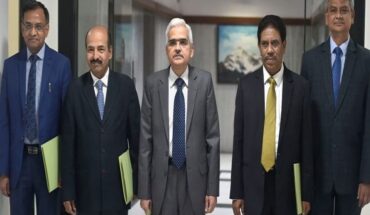The government has appointed a new Governor of the Reserve Bank of India (RBI). Sanjay Malhotra has been entrusted with this responsibility. Since his appointment, conversations have started about the difficulties he would encounter. The government has made it very evident through the actions of former Governor Shaktikanta Das and newly appointed Governor Sanjay Malhotra that it views control over the nation’s banking system and economic structure as crucial, and it has left no place for debates or divergent opinions in this regard. The six years that Shaktikanta Das served as governor were certainly successful and ended without any issues with the government.Previously, renowned economist Raghuram Rajan, who had served as the RBI chief, warned the U.S. of an impending recession as early as 2003. Following Rajan, the Modi government appointed Urjit Patel as Governor during its first term. However, after Urjit Patel’s sudden resignation on December 10, 2018, Shaktikanta Das was appointed on December 12, 2018. At that time, there were speculations in the economic sector about whether he could align with the government’s rapidly advancing economic agenda. He proved the skeptics wrong. During his tenure, the Indian economy faced the financial crisis triggered by the COVID-19 pandemic, marking the first negative GDP growth in 40 years. Under India’s presidency of the G20, several positive ideas were turned into tangible results. During this period, India also achieved rapid GDP growth, securing its position as the world’s fifth-largest economy.
Sanjay Malhotra takes charge of the RBI during challenging times. Recently, the second quarter results of the current financial year were released, showing a decline in India’s growth rate. Consequently, the RBI has revised its growth forecast for the current financial year from 7.2% to 6.6%. Boosting the growth rate is a critical challenge, with rising inflation being the primary concern. Inflation in October was recorded at 6.2%, exceeding the RBI’s upper tolerance limit of 6%. In November, it dropped to 5.5%, which is commendable but still not ideal, as the RBI aims to control inflation at 4%. Additionally, the global increase in oil prices poses a significant risk to domestic inflation. Consequently, the RBI has revised its inflation forecast for the financial year to 4.8%, up from the earlier 4.5%. Thus, controlling inflation will be a major challenge for Governor Sanjay Malhotra. It remains to be seen whether the RBI will prioritize rate cuts in the coming days.
Another critical challenge for the new Governor is stabilizing the rupee against the dollar. Former Governor Shaktikanta Das intervened in the Indian markets, selling $130 billion over the past two years to manage the demand for dollars and prevent the rupee from weakening. This strategy was highlighted last month by a prominent economist and former Chief Economic Advisor to the Modi government, sparking discussions in economic circles. With the rupee currently stabilized at 84 to the dollar for over two years, there is speculation about whether it will be maintained at this level or allowed to adjust slightly to support India’s exports. Under Shaktikanta Das’s policies, Indian exports have grown by only 4.5% since 2019, compared to an average growth rate of 10% in the previous two decades.
Globally, new challenges are also expected to confront the RBI. The direction of U.S. President Trump’s economic policies will be a key factor. Additionally, if the U.S. Federal Reserve cuts rates, it will be interesting to see whether India follows suit or prioritizes long-term economic stability. The RBI’s stance on any resulting stock market fluctuations will also be closely watched. Currently, the Modi government is in its third term, and the upcoming February 1 budget will likely introduce new economic policies to spur growth. The RBI’s stance on these policies will become clearer in the days leading up to the budget. Another issue is the widespread adoption of UPI for payments in India and the rapid integration of artificial intelligence in banking. However, banking frauds facilitated by technology are also on the rise, which requires stringent action from the RBI to safeguard the interests of common investors.
Dr. P S Vohra is a Writer, columnist and financial thinker, View are personal.






